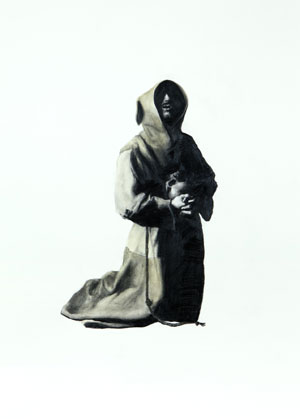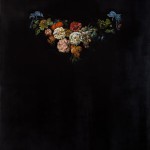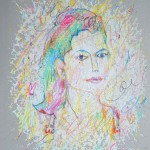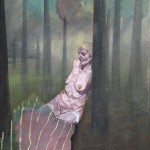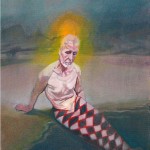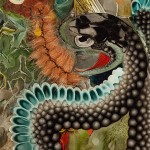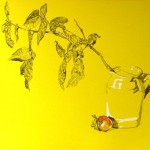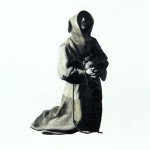“There was a time when art was all about beauty. Every painting, every sculpture, every piece of music strove to be beautiful. Beauty was the most perfect kind of knowledge, reconciling the sensual and rational parts of the brain.” Simon Rumley talks to Vegas Gallery’s Creative Director, Jessica Carlisle, and artist Hester Finch, about their latest exhibition, Kalliphilia. Click here to listen to the podcast, or right click to download the file.
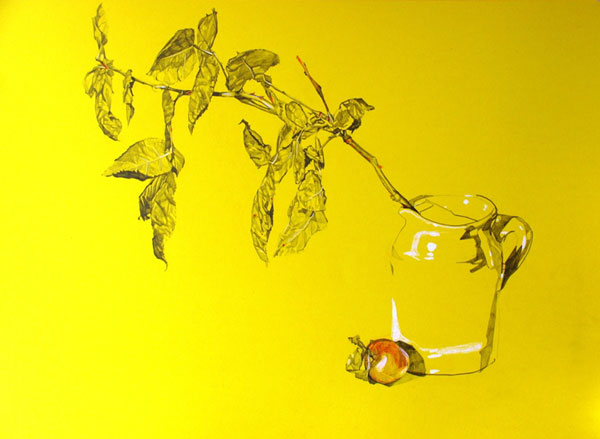
Further Information: The movements and isms of the 20th century changed the approach to beauty. Avant-garde intellectuals challenged the accepted notions of aesthetics, and by the end of the century it was the anti-aesthetics of post-modernism that dominated, with conceptual art ruling the roost. Beauty had been rejected, cast out – considered at best irrelevant and frivolous, at worst decadent, oppressive, and wrong. Indeed, so potent was this reaction that it coined a term: kalliphobia.
So where does that leave beauty now? Has it been reclaimed? Can it be reclaimed? Should it be reclaimed? What is it that makes beautiful art so troublesome, and why does the anti-aesthetic continue to hold the moral high-ground? Is it because a beautiful painting is too quick to convert into a commodity? Or are we so conscious of our troubled world that beauty seems somehow inappropriate, out of touch, quaint?
Kalliphilia showcases works by a selection of contemporary artists who, unusually, and perhaps even unfashionably, embrace beauty and form in their practice. Such an approach can seem surprising in an art world where for so long beauty has been steadfastly avoided. But these artists don’t pursue it blindly, or slavishly, but rather use it as a means to an end. They are unified in their affirmation of the aesthetic, and by their desire to engage their audience through making work that is visually appealing.
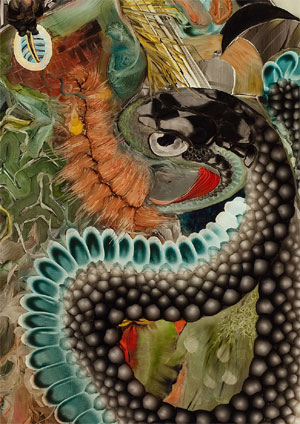 Together, they demonstrate how beauty can be more than just skin deep. Emma McNally shows how it can communicate and inform, introducing pictorially thoughts and theories usually explored through the written word and acting as an eloquent entry point to more complex ideas. Her intensely worked drawings embody the philosophical concepts she investigates, and exist as physical manifestations of ways of seeing the world. Tom Gallant proves that beauty can provoke as well as please in his exquisite pornographic arabesques, which delight and shock in equal measure. Hugo Wilson demonstrates that beauty is not always straightforward: the misleading simplicity of his holy-water-colour works belies their subversive subtext, and Al Braithwaite, in his clever manipulation of existing objects, casts new light on social and political issues and offers up new perspectives on contemporary debates in a smart and succinct way. Beauty can be dynamic, as in Hugo Dalton’s sketches of dancers, which celebrate movement and happily straddle the divide between abstraction and figuration, or it can be quietly contemplative, as in Emma Bennett’s timeless still-lives. Beauty is also capable of disturbing and unsettling, as it does in Hester Finch’s empty landscapes and distorted figures and Andy Harper’s thorny undergrowths of twisted nature. Perhaps most importantly, beauty can tap into the very essence of what it means to be human through a primal language that is illustrated perfectly in Whitney McVeigh’s abstractions.
Together, they demonstrate how beauty can be more than just skin deep. Emma McNally shows how it can communicate and inform, introducing pictorially thoughts and theories usually explored through the written word and acting as an eloquent entry point to more complex ideas. Her intensely worked drawings embody the philosophical concepts she investigates, and exist as physical manifestations of ways of seeing the world. Tom Gallant proves that beauty can provoke as well as please in his exquisite pornographic arabesques, which delight and shock in equal measure. Hugo Wilson demonstrates that beauty is not always straightforward: the misleading simplicity of his holy-water-colour works belies their subversive subtext, and Al Braithwaite, in his clever manipulation of existing objects, casts new light on social and political issues and offers up new perspectives on contemporary debates in a smart and succinct way. Beauty can be dynamic, as in Hugo Dalton’s sketches of dancers, which celebrate movement and happily straddle the divide between abstraction and figuration, or it can be quietly contemplative, as in Emma Bennett’s timeless still-lives. Beauty is also capable of disturbing and unsettling, as it does in Hester Finch’s empty landscapes and distorted figures and Andy Harper’s thorny undergrowths of twisted nature. Perhaps most importantly, beauty can tap into the very essence of what it means to be human through a primal language that is illustrated perfectly in Whitney McVeigh’s abstractions.
Beauty is not vapid. Beauty is powerful, engaging and democratic. It makes us receptive. In contrast to the anti-aesthetic, which reinforces art’s elitism, beauty opens doors. And that is what this show seeks to celebrate.
Kalliphilia, a group exhibition, runs until 24 March 2012 at The Vegas Gallery, 274 Poyser Street, London E2 9RF. For more information, visit the website.

